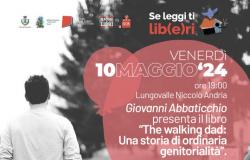“How did we get to this point?” It was the question that opened the speech of the new president of the Venice Biennale at the press conference of the sixtieth edition of the visual arts exhibition. A question which, given the current situation, could seem catastrophic and the bearer of who knows what return to order and instead is intended as a window onto a future of peace that only a place like the Biennale can delude itself into opening. Having said this, the exhibition of Adriano Pedrosa, Brazilian and the first Latin American to curate the Biennial, is not easy to analyze without falling into postcolonialist rants, the paean of different modernisms, the beard of political and gender correctness or, on the opposite side, the official ghettoization in the universe of folklore tout court. The title – beautiful on paper – “Stranieri Ovunque”, taken from the Italian-British collective Claire Fontaine founded in Paris in 2004, reveals some problems in the practical declination of the exhibition, running the risk of transforming the foreigner into a curious person or a tourist. The exhibition is based on the inclusion of the excluded, the sexually undefined, the indigenous, the outsider artists of the art system. 330 in total, 120 deceased. This form of necrophilia which has been in fashion for several editions brings me to another quote from Buttafuoco’s speech. Citing Magritte’s famous painting of a pipe “this is not a pipe”, he says “this is not a Biennale”.
“How did we get to this point?” It was the question that opened the speech of the new president of the Venice Biennale at the press conference of the sixtieth edition of the visual arts exhibition. A question which, given the current situation, could seem catastrophic and the bearer of who knows what return to order and instead is intended as a window onto a future of peace that only a place like the Biennale can delude itself into opening. Having said this, the exhibition of Adriano Pedrosa, Brazilian and the first Latin American to curate the Biennial, is not easy to analyze without falling into postcolonialist rants, the paean of different modernisms, the beard of political and gender correctness or, on the opposite side, the official ghettoization in the universe of folklore tout court. The title – beautiful on paper – “Stranieri Ovunque”, taken from the Italian-British collective Claire Fontaine founded in Paris in 2004, reveals some problems in the practical declination of the exhibition, running the risk of transforming the foreigner into a curious person or a tourist. The exhibition is based on the inclusion of the excluded, the sexually undefined, the indigenous, the outsider artists of the art system. 330 in total, 120 deceased. This form of necrophilia which has been in fashion for several editions brings me to another quote from Buttafuoco’s speech. Citing Magritte’s famous painting of a pipe “this is not a pipe”, he says “this is not a Biennale”.
A statement that I feel like sharing although probably with different reasons. For various editions the Biennale has become a museum exhibition too large to fit in a museum, but it is no longer a Biennale. The Biennale was indeed a chaos, but a chaos where those who directed or curated it tried to insert into it the fallacious immediacy of the present and the presumption of glimpsing the future. Sometimes producing catastrophes. The Biennale was born as a right and necessary mistake and possible disaster. In the mistake lay the uniqueness of this still unique and unsurpassed institution. This is why the legitimation of the excluded takes place in Venice: not in Delhi, not in Sydney, not in Rio, not even in New York or Paris. But for several editions the Biennale has no longer allowed itself errors, it looks to history as a guarantee, to the present as a strategy and forgets to venture any prophecies. More Instagramus than Nostradamus. Pedrosa transformed Western Egocentrism into Egomarginalism but in doing this with all legitimacy he took the responsibility of altering the ecology of marginality. Bringing the excluded to the center means exposing them to the anthropophagy and cannibalism of the Western art world which devours, digests and defecates without mercy, with a terrifying rapidity of use and consumption. The center may be a black hole.
When in November the excluded, the strange, the indigenous and the different return home, to the margins, they will present to the curator, poacher, sociologist, anthropologist, the account of the effects and damage that his vision will produce in the long term for their balances, to their mental ecology, to their identity. Does this mean that the sclerotic patterns of the West cannot be undermined? Absolutely not. But bringing the entire periphery of the world to Venice en bloc is not dismantling the West but deluding the periphery into believing that it has become Venice. A huge responsibility. Pedrosa will have to give some bad news to many of the living artists on display when they return home. Not foreigners everywhere but foreigners forever. Not a condemnation but a destiny due to many factors, not all of which are the fault of the West but of the reality of things and the quality of one’s imagination. One can play the cello alone at home convincing himself that he is Pablo Casals, but if someone takes him to Carnegie Hall for the simple sake of inclusiveness he may run the risk of receiving boos instead of applause.. This Biennial will be very popular with the public and will be a success, but for the wrong reasons. It will be a success precisely because of the folkloric and artisanal stereotypes that Pedrosa has tried to overturn.
However, this Biennial can represent a lesson – good or bad it depends – for the exclusive club of the art world. The stray visitors, in packs, common and cheap, the hit-and-run tourists, always looked at with contempt by us egomaniac curators, the self-referential aristocracy of art, will have their revenge. Excluded, regardless of their origins, always made uncomfortable, they will find a lot with which to satiate their rightful curiosity and their sometimes blissful ignorance. When asked how we got to this point, Buttafuoco responded in his astonishing speech. Where we go from this point on is all to be seen and very complicated. Very complicated indeed.






